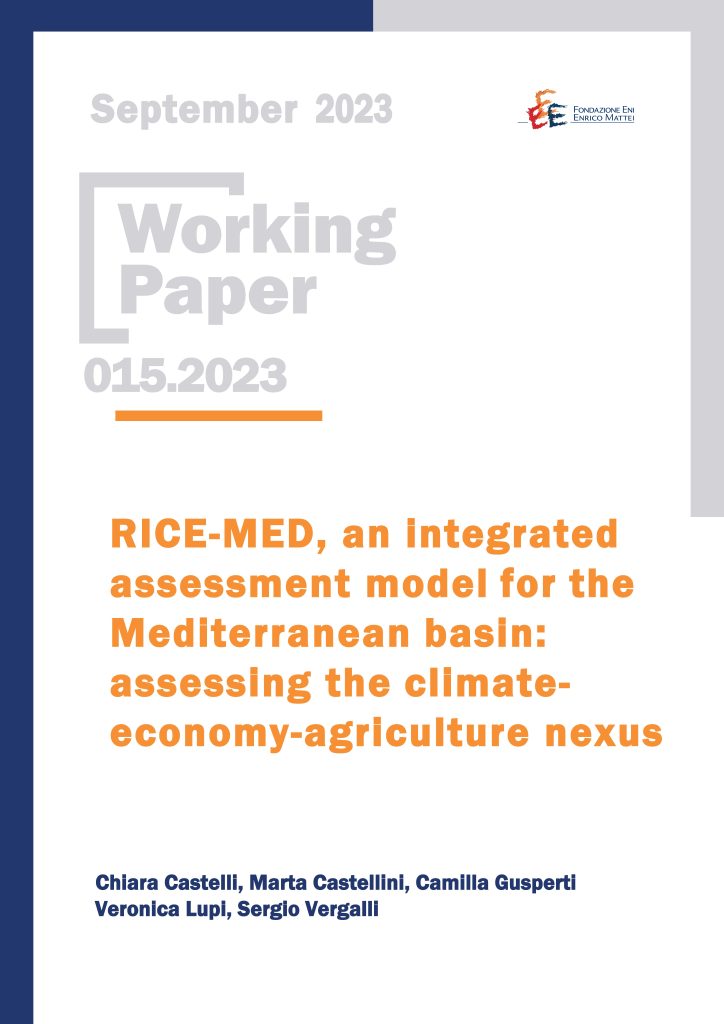RICE-MED, an integrated assessment model for the Mediterranean basin: assessing the climate-economy-agriculture nexus

04.09.2023
Chiara Castelli (Wiener Institut fur Internationale Wirtschaftsvergleiche); Marta Castellini (Department of Economics and Management, University of Padua and Fondazione Eni Enrico Mattei); Camilla Gusperti (Fondazione Eni Enrico Mattei); Veronica Lupi (Department of Environmental Economics, Institute for Environmental Studies, Vrije Universiteit and Fondazione Eni Enrico Mattei); Sergio Vergalli (Department of Economics and Management, Università degli Studi di Brescia and Fondazione Eni Enrico Mattei)
Q54, H23, R13
IAMs, climate change, carbon tax, carbon price, emissions, temperature, energy, Mediterranean region, Mediterranean countries
In this work we update the regionalization and the calibration of the Regional dynamic Integrated model of Climate and the Economy (RICE) in its 1999 version developed by Nordhaus and Boyer (2000), with a focus on the Mediterranean countries. Our aim is to assess the impact of climate change damages on their main macroeconomic variables in a context where all economies are fossil fuel based. In addition, we extend the model by introducing the uncertainty associated with a possible future catastrophic event, triggered by the temperature increase and variation over time, following the approach of Castelnuovo et al. (2003). We then develop an empirical exercise to asses the impact of climate change on the agricultural sector at country level. In this framework, we implement the traditional IAMs scenarios, namely the Business As Usual, the Social Optimum and the Temperature Limit, where population dynamics is calibrated according to the IIASA SSP2 projections. Among our findings, we show that, in the absence of renewable energy sources and break-through technologies, meeting the limit of a temperature increase of less than 2°C requires a carbon tax of more than 700 USD/tC by 2050, doubling by the end of this century. When uncertainty is introduced, the higher the probability of a possible catastrophic event and the greater the associated utility loss, the more society is willing to pay for a rising cost of carbon. The upward trend of the carbon tax relative to the no-uncertainty model is reduced by the end of the century in the temperature-limit scenario, due to the benefits associated with this policy and the inclusion in the model of societal awareness of the potential risks of climate change. In both versions of the model, the agricultural sector in the Southern Mediterranean countries is severely affected, and stringent policies can partially mitigate these impacts and reduce damages by 2100.
***
Citazione suggerita: C. Castelli, M. Castellini, C. Gusperti, V. Lupi, S. Vergalli, ‘RICE-MED, an integrated assessment model for the Mediterranean basin: assessing the climate-economy-agriculture nexus’, Nota di Lavoro 015.2023, Milano, Italy: Fondazione Eni Enrico Mattei
